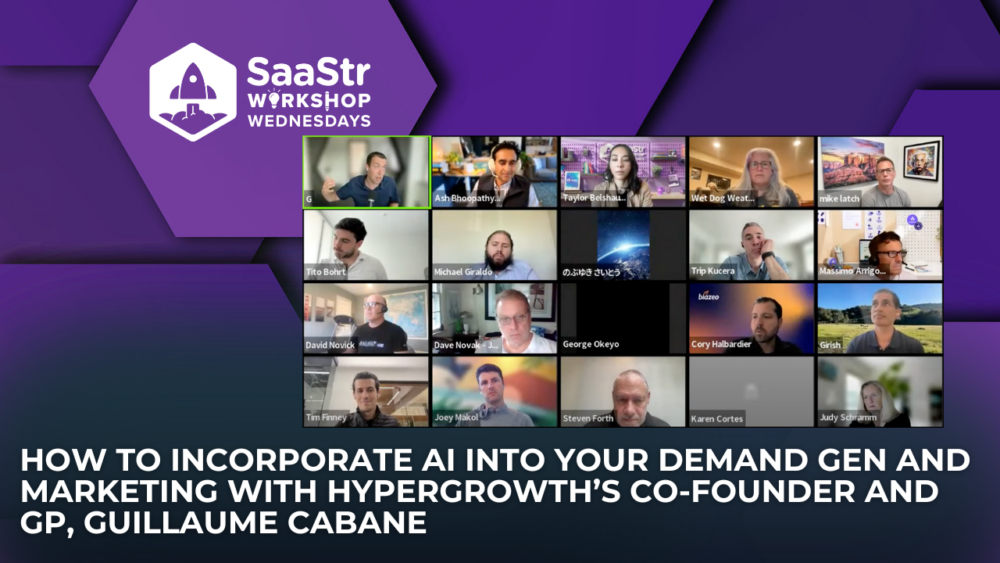Everyone’s trying to make sense of AI, what’s happening in the ecosystem, and how to incorporate AI into your demand generation and marketing. In this week’s Workshop Wednesday, held every Wednesday at 10 a.m. PST, demand gen veteran and founder of HyperGrowth Partners Guillaume “G” Cabane talks about:
- The evolution of the B2B demand gen stack
- Picking the right tool for your needs
- Practical examples and workflows
The Evolution of the Demand Generation Stack
G has been focused on the marketing space for over 20 years, giving him a good perspective on its evolution. Today, AI is heavily taking over sales roles, so this information is geared toward outbound, and how do you make the most of this switch.
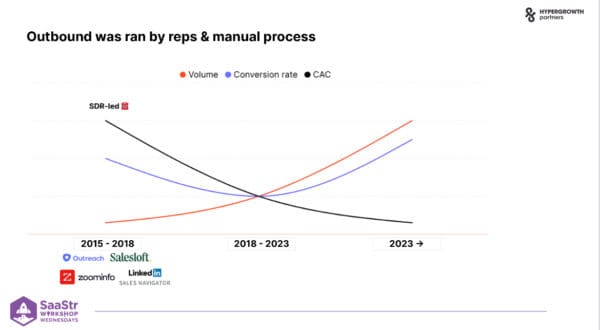
If we go back before 2018, even to 2015, it was a world where SDRs ran outbound. The reps were responsible for everything from the contact list to email copy to sequences. There was a one-on-one relationship between humans and the mailbox, with one rep to one mailbox.
As a consequence of this very manual process, the output was a low volume of emails and engagement and a fairly high CAC. But the response rates were pretty good! The high, single-digit, positive response rates were why we had huge SDR teams back then.
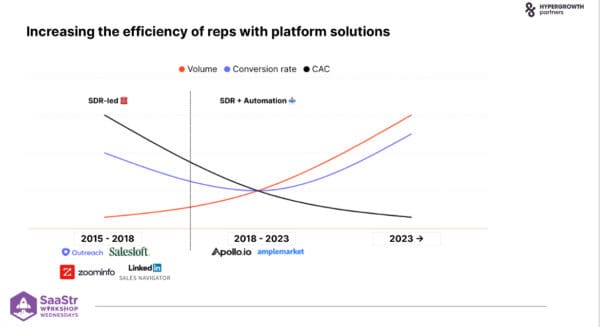

If we move forward to the end of 2019 towards 2023, that bottleneck of a huge SDR team starts to be identified and solved by platforms handling infrastructure and having ownership within sales but more sales ops. It’s much more efficient, but reps are still in charge.
Outbound volume exploded, and the cost per contact engaged decreased, but so did the conversion rate because everyone was spamming everyone. We got below a 1% engagement rate at a high volume for a time.
The Turning Point at the End of 2022
The turning point came at the end of 2022-2023. It appeared that outbound was no longer working at that scale, but then, everyone was surprised by the coming of age of AI tools.
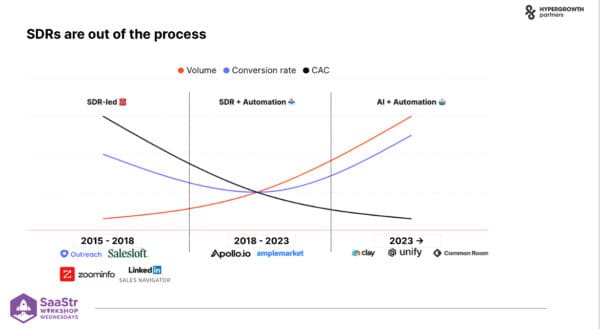

The process is entirely out of the SDR’s hands now because the modern stack covers everything they used to do: audience building is automated based on signals, copy generation is automated, and outreach and response handling is automated.
Now, conversion rates are back to single high digits. Whether that remains the case is unknown but unlikely. Most companies haven’t adopted the modern approach yet, but eventually, everyone will catch up. There’s a window right now to act and reap the benefits.
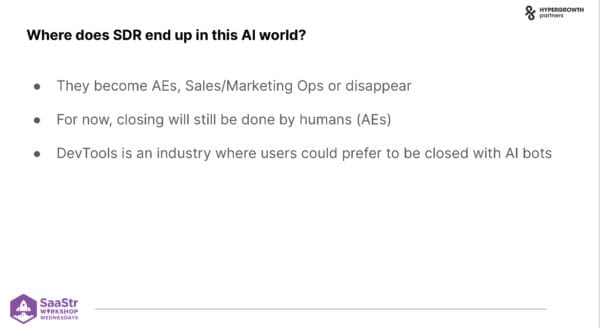

Where do SDRs end up in this AI world? Nowhere, potentially. They might become AEs, the closers, in ops, or displaced entirely. For now, closing is still done by humans. However, industries are being built like development platforms where engineers would rather buy from a bot.
Which Tool Should You Pick?
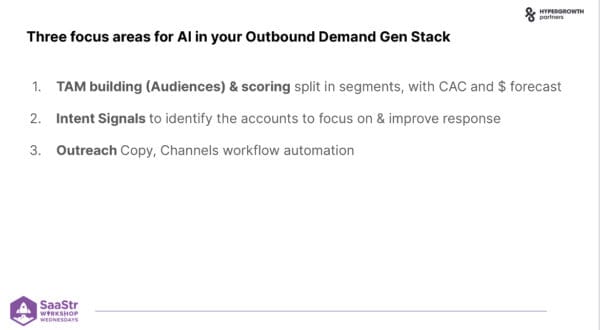

There are three focus areas to look into when choosing an AI tool.
- TAM building
- Intent signals
- Outreach
For audience-building, you want to break it down into multiple segments based on forecasted value and what it costs to close them. Then, there are intent signals where you laser focus efforts on the smaller subset of that audience to increase conversion with better copy. Last is the action. How do we send an email or LinkedIn Message?
Once you’ve looked at those three buckets or pillars, you can decide if you want a platform that does everything for you or if you want to build a composable stack. “I’d do both, depending on the situation,” G says.
Buy vs. Build
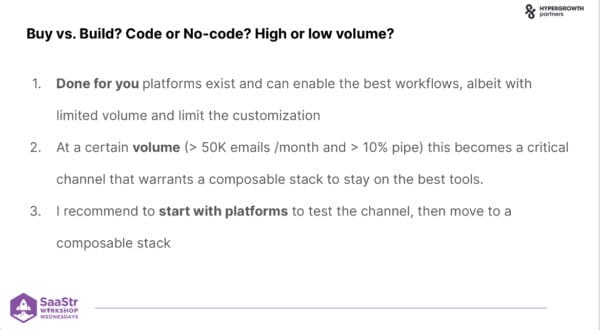

What’s clear is that a lot of the early done-for-you platforms are becoming legacy because their pricing is user-based. They’re constrained and incentivized to have more reps on the platform, which isn’t the world we live in today. The platform you want to invest in is the one where pricing is incentivized to have fewer humans, not more.
At a certain volume, usually greater than 50k emails per month, it makes sense to invest a lot more and be able to control the different components. G recommends starting with platforms to test the channel before moving to a composable stack.
When to Use Which Tool
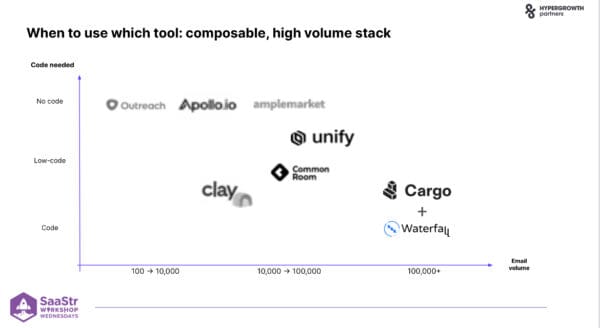

First, you want to make reps more efficient. You can choose a no-code option of Outreach, Apollo, and amplemarket. Those three are for reps and work well until about 100k emails, or maybe even 50k emails each month. Little customization is possible in the little AI equations you can put in there.
If you want more control, the newer platforms like Clay, Unify, and Common Room are great options for automated, low-code platforms. And, if you want even more control and volume at larger companies like the Ramps and Reddits, tools like Cargo and Waterfall can achieve that.
Practical Workflow Examples
Let’s look at some workflow examples.
Clay
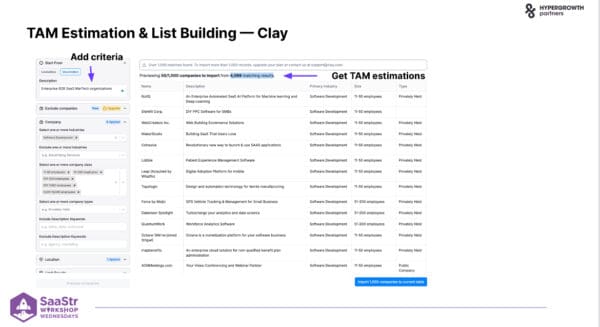

Clay is a great example of TAM estimation and list building. In minutes, you can estimate your audience and the size and number of accounts based on a set of criteria. Companies can quickly validate these are the right companies, which is hard to do anywhere else.
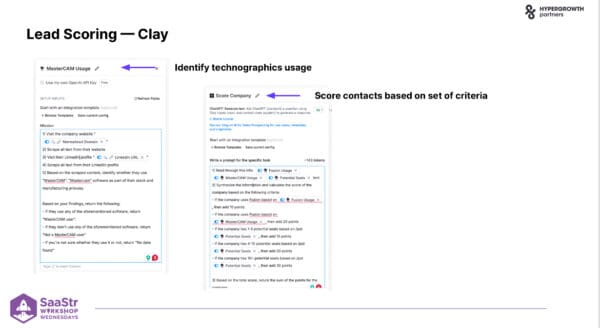

It’s also a great tool for lead scoring. You can build a scoring system based on those companies and fields and have a point-based system to sort through the companies.
Common Room
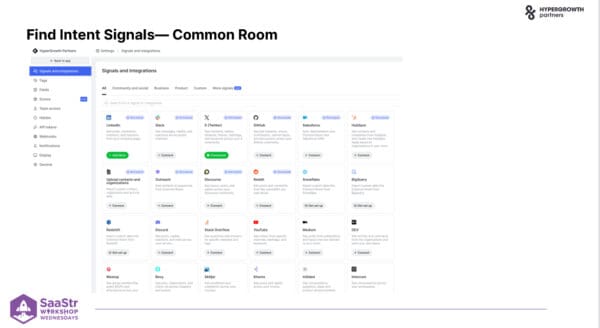

You can find intent signals in the Common Room. In the past, G had to build signals 1-1, each with an API integration. Now, there are marketplaces to do that. In Common Room, with just a few clicks, you can activate the integration from Slack, Reddit, Twitter, or wherever, and it will find all the companies showing intent based on your filters.
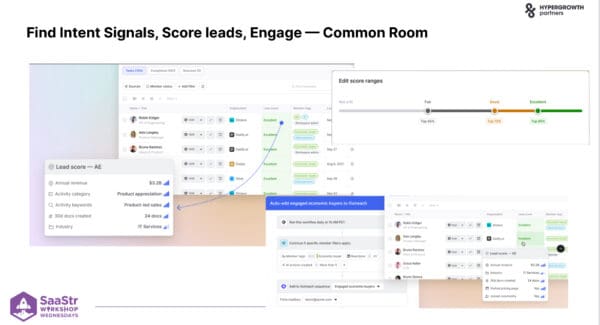

You can see the example of intent here, and Common Room can aggregate that intent data per account and give you an intent score. This wasn’t easy to do even three years ago. Now, you can have a bell curve of intent, maybe with a decay model, and push those accounts or contacts to whichever engagement platform you want.
It’s fascinating because it means those tools are displacing most of the value of Outreach out of Outreach. Outreach is only for sending emails, but all intelligence lives elsewhere.
LoneScale, Cargo, and Waterfall
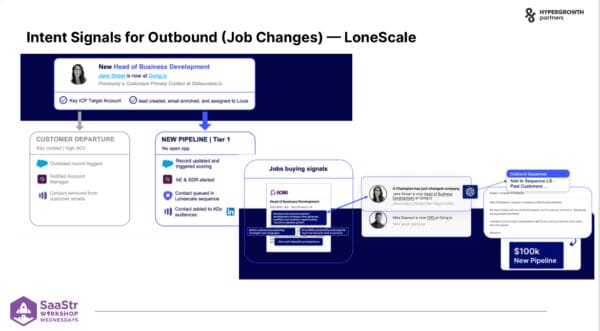

If you’re in the composable stack camp, a great signal is job changes. Whether a champion is moving a campaign from the current customer company to a prospect, non-customer company, you’ll know about it.
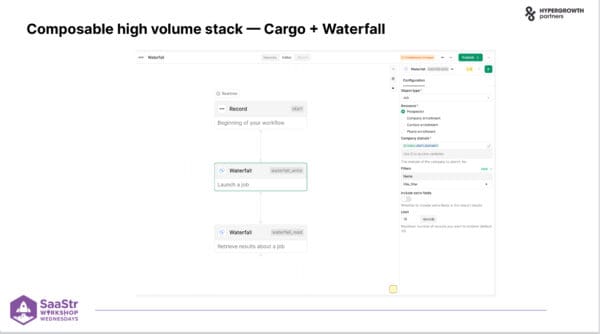

Or if someone is blocking you in the company, someone who said no, once they move out, you’ll know it’s time to reach out to the same company. LoneScale allows you to scrape and monitor LinkedIn changes all the time. You can track a set of accounts or users or maybe even target accounts opening roles for possible champions based on a job description.
Imagine the amount of work you don’t have to do by using these tools.
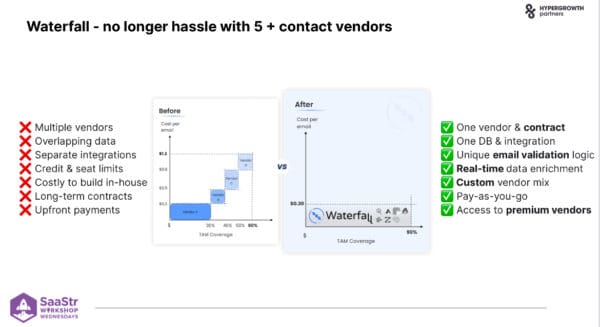

The best high-volume approach for a composable high-volume stack is something like Cargo, which is entirely dedicated to B2B demand-gen automation. It has direct integrations with Waterfall, the only contact data aggregator. It enables you to have multiple vendors in one API.
All high-volume senders sending more than 100k emails monthly use this. You want more control and not depend on any part of the stack.
Goal: Get 10% of U.S. Advertisers to Advertise on Reddit
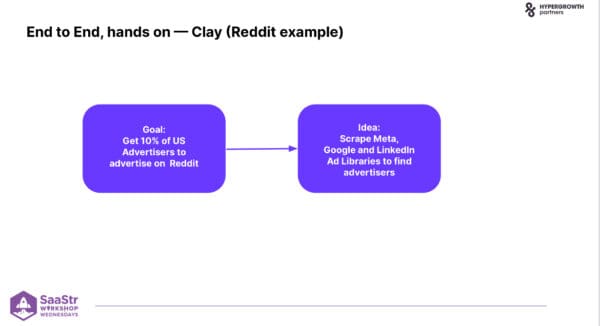

G recently became an advisor for demand gen to Reddit’s advertising business. They came up with a goal: get 10% of U.S. advertisers on Reddit by the end of the year. That’s a tall order. Sure, it’s Reddit, but it’s also 10% of the entire U.S. market. How do they do that?
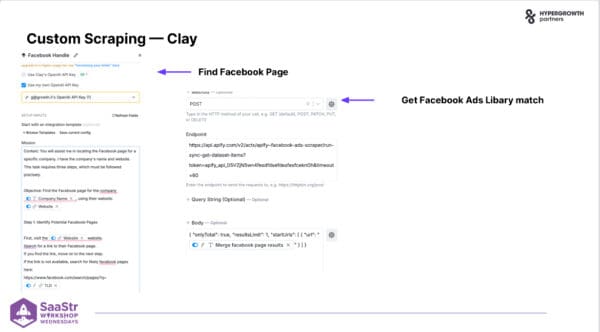

By scraping Facebook ads library, Google, and LinkedIn to find out who’s advertising right now and would be a good fit for Reddit, and then reaching out with a good excuse of seeing their advertising on Facebook or LinkedIn and seeing if they want to replicate it.
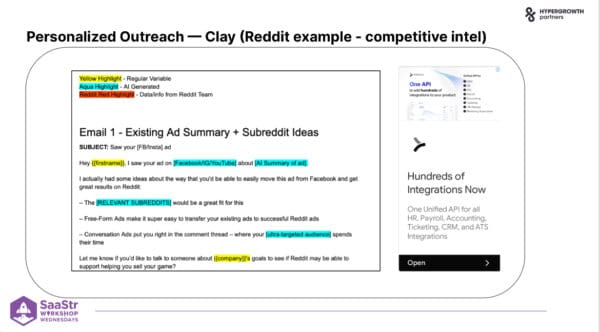

They sent screenshots from Clay and used Clay to prove the feasibility of the concept before investing too much. And it worked! It only took a couple of days of work to get it running and to get a couple thousand highly targeted, customized, personalized emails per week. It’s not super high volume yet and breaks over 50k rows in Clay, but it’s magnificent.
For a stack that costs close to nothing, that’s almost 100x less than it used to be.
Unify
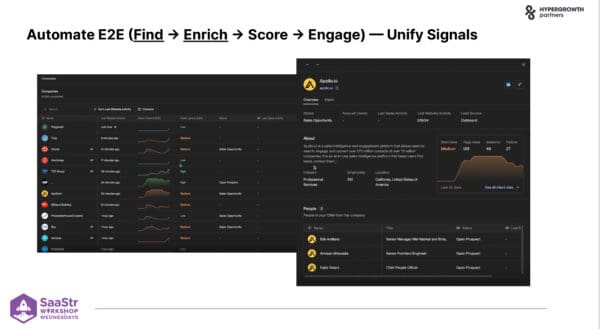

Unify can do similar things, but it is at the opposite end of the spectrum, with a no-code way to get a list of all the companies visiting your website in minutes. You can build intent levels over the past 30 days to get a bell curve of intent for all prospects and create engagement around that. For example, you could tell it, “Hey, based on the company accounts that have seen my pricing page with a champion that changed job and also saw my competitor on G2, and then move those who aren’t on Salesforce to Salesforce and engage them.” That’s huge. Those accounts are so qualified.
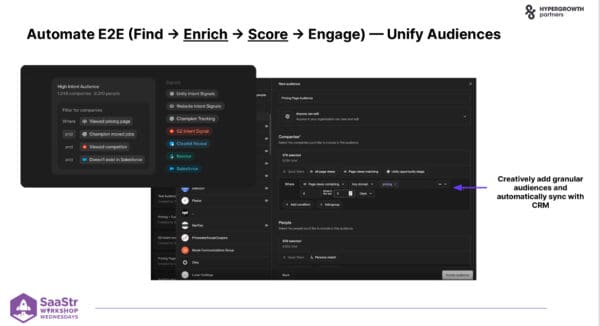

You can also build and stack playbooks on each other. You can have playbooks based on seniority or role, and it does a couple of thousand companies at once at the account and personal levels.
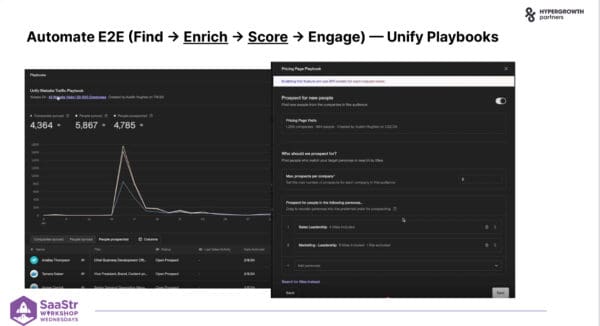

Here’s another example from Unify Smart Snippets, where you can find the people, enrich the data you have on them, score it, and engage them. Prospects are loving it. Why? Because you’re getting high-quality information on prospects within minutes, which is hard to pull off without such a platform.
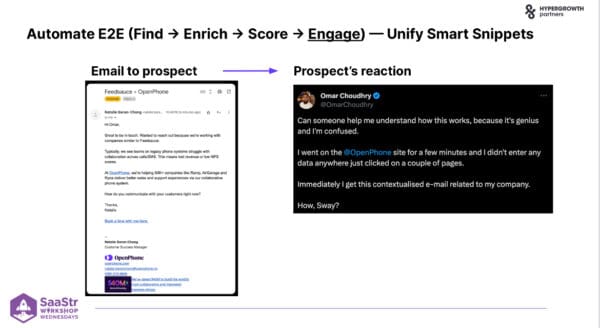

Key Takeaways
- Outbound lives within growth marketing ops. Embrace it because it’s not going back.
- The core use cases for AI in demand gen workflows are TAM building, leading scoring, and personalized outreach.
- Where is the AI? Lead scraping, intent signals, and tokenized messaging.
- Pick your poison based on email volume, engineering, or no-code.
The tech cycle is accelerating. The first cycle was seven years, then four, and then three years into this AI cycle, with products changing every quarter or so. How do we, as marketers, cope with that? How do we make tech investments or bets knowing that something better may supersede a decision or product next month?
We’re now in an era of high-quality automated outreach. Soon, if it’s not already, it will be indistinguishable from the best human SDRs. How will we handle that?
